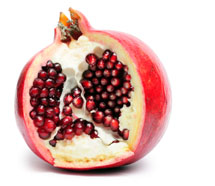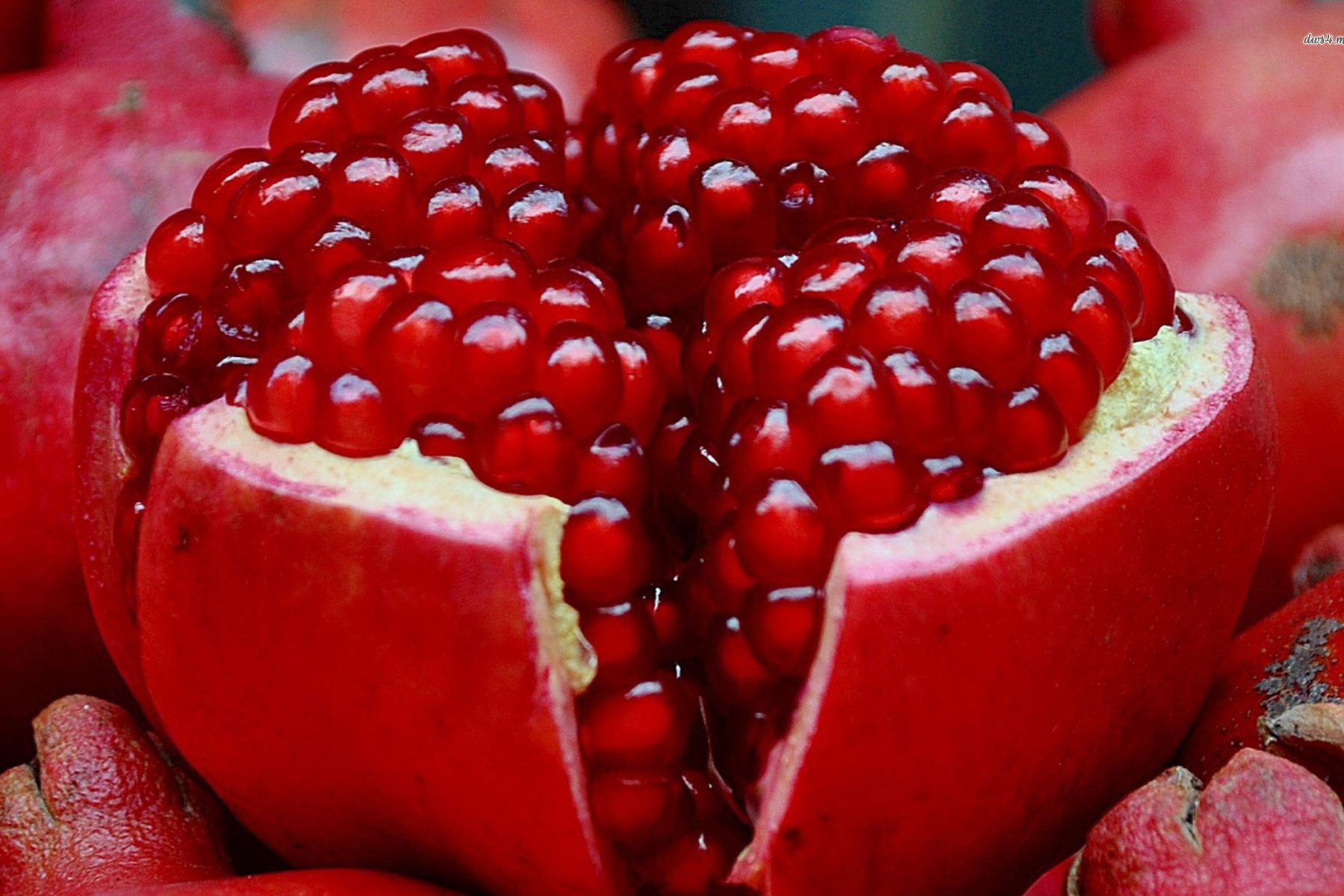 Let me get this out of the way before I go any further with this column: pomegranates while delicious, good for you in so many ways and truly a wonderful addition to any dish they can be a PAIN to peel. Ok, not really technically difficult, mind you, just a pain or should I say, stain. There, I said it, now I can get on with the rest of the column.
Let me get this out of the way before I go any further with this column: pomegranates while delicious, good for you in so many ways and truly a wonderful addition to any dish they can be a PAIN to peel. Ok, not really technically difficult, mind you, just a pain or should I say, stain. There, I said it, now I can get on with the rest of the column.
This time of year is prime time for utilizing that ruby red jeweled fruit known as the pomegranate front and center on all your menus. This fruit is native to Persia (Iran to the modern minded), and is considered one of the oldest fruits known to man.
Once you get past the bazillion seeds and weird white membrane that holds them together, you have beautiful seeds that produce a tangy, sweet, full flavored juice that becomes the basis for sauces and marinades and drinks and desserts and anything else you can think of to add them to. The flavor is equally at home with the sweet and savory flavors and is just about perfect as an accent or garnish on salads, main courses.
When choosing your pomegranate, pick one that seems heavy for its size and you want it to be approximately the size of a large softball. Pomegranates color ranges reddish yellow to a deep dark red. The color and blemishes on the skin aren’t an indication of the freshness or sweetness of the fruit, it just looks that way. Pomegranates will stay fresh up to a week if left out on the counter or for up to three months if you refrigerate them.
Peeling a pomegranate isn’t rocket science but it does take some prior planning. To get the seeds out of the pomegranate you will need a sharp knife and a large bowl of cold water. First slice off the top and the bottom of the pomegranate. You can either score the skin as you would an orange before you peel it or cut it into quarters (be careful of the juice, it STAINS). Submerge the whole or sections of the pomegranate in the bowl of cold water and peel away rind or gently pull the seeds out of the sections while it’s underwater. Break into sections, and pull seeds from the pith with your fingers. Drain seeds in a sieve and throw away the pith. Be sure to drain well.
Some recipes call for pomegranate molasses or pomegranate syrup. The molasses is just a cooked-down, thicker version of the syrup. This stuff is really first-rate food stuff as pomegranate juice contains vitamin C, A, E, folic acid and is full anti-oxidants. Yummy and oh so good for you. For your culinary convenience you can buy the fresh fruit, juice, syrup and/or molasses in most grocery stores these days. If you can’t find the molasses, you can substitute the syrup.
And finally, do you eat the seed inside or spit it out? Well, the truth of the matter is that it doesn’t matter, you choose. Know, however, most of the fiber associated with the fruit comes from the seed. It won’t hurt you and you’ll hardly even know it’s there.
One medium pomegranate should yield 1/2 to 3/4 cup of whole seed pips or 1/2 cup juice.
